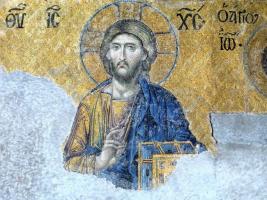Andy Wharhol: 7 Iconic Works of the Pop Art Genius
Andy Warhol is considered the father of pop art, an artistic movement that emerged in the mid-twentieth century that incorporated the themes of mass culture into the repertoire of the arts and broke the aura of intellectuality with which art was assumed, especially after movements such as Jackson's Abstract Expressionism Pollock.
Warhol was a provocative and scandalous artist, not concerned with hiding his interest in money. His genius was in the ability to break artistic stereotypes, apply advertising communication criteria to art and reveal the hypocrisy of the field of the arts.
In this article we invite you to take a tour of the most emblematic works of the author that marked a before and after in the history of so-called contemporary art. These works have given rise to numerous and inexhaustible discussions about the role and function of art in modern times.
Serie Campbell's Soup Cans
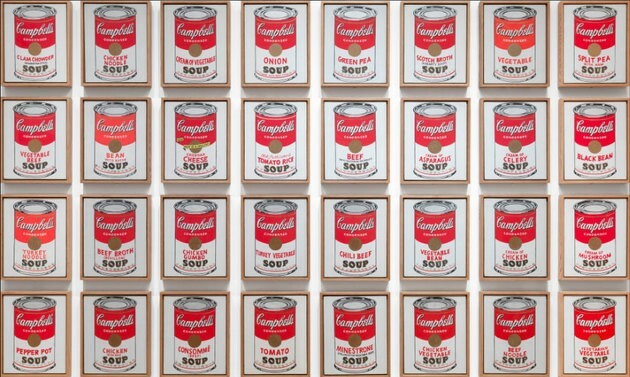
Who said a can of soup can be an art theme? That was one of the first controversies that Andy Warhol aroused with this provocative work. From the individual reproduction of the soup to the formation of the series, Warhol is situated ironically in front of the reality of the consumer society and in front of the artistic community that does not want face it.
If art must represent symbolic reality or the human condition, why does it refuse to acknowledge the ubiquitous brand of industry and consumer culture in society? Isn't consumer culture a reality of customs for the 60s? After all, Warhol himself claimed that he ate this soup every day for 20 years.
This consumer object, an unpoetic industrialized food, became a topic of discussion on the cultural scene. But Warhol's audacity was not alone in the chosen theme. So was the mode of representation and the technique used: a serial reproduction of images based on silkscreen printing.
With this, Warhol would be giving a blow to two great key points of the world of fine arts: the importance of the subject and the value of the "unique" and "original" artistic object.
Serie Marilyn monroe
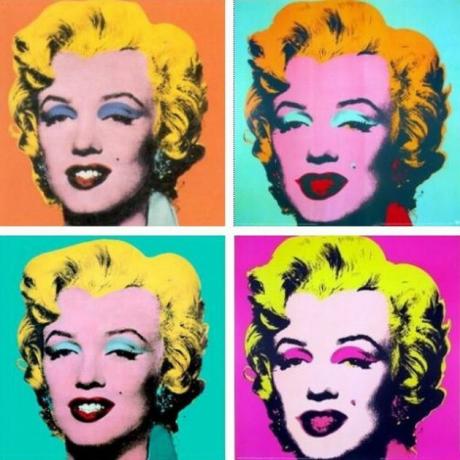
In 1962 Marilyn Monroe died in the prime of her youth. Marilyn had become an icon of American pop culture, and she exerted an enormous influence on the social imagination. But not for that Marilyn was fully valued. Unlike.
Warhol begins a series of portraits of Marilyn Monroe applying the technique of screen printing, in which the following are printed from an original image. The more times the image is played, the more it becomes blurred or warped.
Thus, Warhol highlights the great hypocrisy of the Hollywood world: Marilyn was an icon destroyed through the repeated exposure of her beauty as a supposed unique value.
See also: Pop art or pop art: characteristics, artists and most important works.
Self portrait
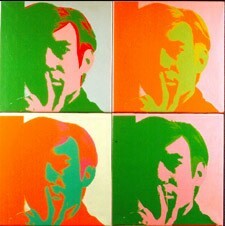
Warhol spent many years of his life obsessed with making money, and that led him to try to impose himself on the artistic world applying the rules of advertising and deliberately ignoring the rules of art conventional.
Thus, Warhol treated himself as a pop culture icon through a series of self-portraits as shown in the image. However, the author applied different concepts and self-portrait techniques throughout his life.
Race riot

Most of the themes Warhol explored had to do with pop culture symbols, which he claims as themes of representation. This characteristic earned him a reputation for being superficial, but Warhol was not a personality unaware of what was happening around him.
After the racial confrontations of 1963, Warhol intervenes a series of provocative images where denounces the hypocrisy of a nation that claims to defend equality but continues to show signs of discrimination racial.
To do this, Warhol reproduces a photograph of the events and intervenes with the colors blue, red and white, typical of the American flag. The gesture would be frontal: if the North American culture is represented by the soup and by Marilyn, also the discrimination.
To make this work, Warhol appropriated a photograph of Charles Moore published in the magazine Life, which was a lawsuit for copyright infringement.
Actually, this image, as well as The Birth of Venus after Botticelli or their versions of the Mona Lisa reveal one of the constitutive elements of contemporary art since the pop art transform the world of fine arts: appropriate the symbols available in the environment to give them a new meaning.
Mao Tse-Tung
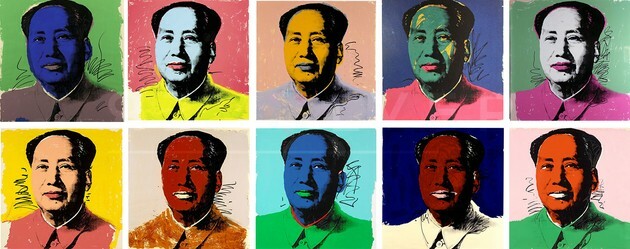
The sixties correspond to the period of the Cold War, when the world experienced the threat of a possible nuclear confrontation between the capitalist and communist countries. By then, the radical left had many adherents in the ranks of the Western intelligentsia, But the terrible crimes that occurred indoors in the countries were also beginning to be known. communists.
In addition to taking the image of established artists and intervening with their reproduction techniques, Warhol also used to take the image of figures non-artistic publics and incorporated them into the "pantheon" of pop icons, either to underline their consecration, or to ironic and transgress the significance.
A political event sparked Warhol's interest in representing the leader of Chinese communism: just in 1972, still in the context of the Cold War, President Richard Nixon decided to visit Beijing in order to get closer to China and open a process of talks. Warhol would see in this approach an artistic opportunity. He took the image of the famous Red Book, he reproduced it and intervened it.
By then, Warhol had already done the same with figures from the political world such as Jackie and J. F. Kennedy, Che Guevara.
Skull

In the 70s Warhol developed a series of skulls (Skulls) applying the techniques that he had already developed in the previous decade. With Warhol being such an artist focused on pop icons, he caught the attention of critics when he released this series.
The experts developed different explanations to understand the appearance of this theme within the pop context of the artist. One of these explanations is based on an event in Warhol's life that occurred in 1968. In this year, Warhol was the victim of a firearm attack at the hands of the feminist writer Valerie Jean Solanas, who by then suffered from schizophrenia. The attack left Warhol on the brink of death.
Another part of the criticism attributes this series to the "simple" need to represent the human condition in the only aspect that is truly universal: the possibility of death.
The Birth of Venus after Botticelli
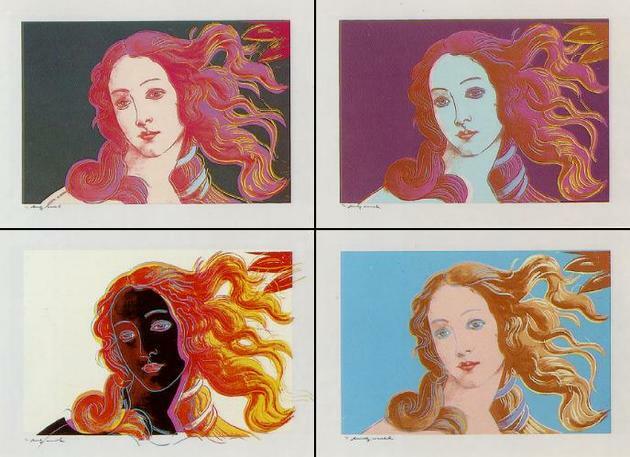
If Warhol was aware of something, it is that not only pop icons lose their meaning after the exacerbated reiteration in the mass media. The emptying of meaning is not exclusive to the masses. Also from the elite culture the meaning is lost, it is blurred thanks to the mere repetition of the sign emptied of its context. This is evidenced by his series The Birth of Venus after Botticelli.
About Andy Warhol
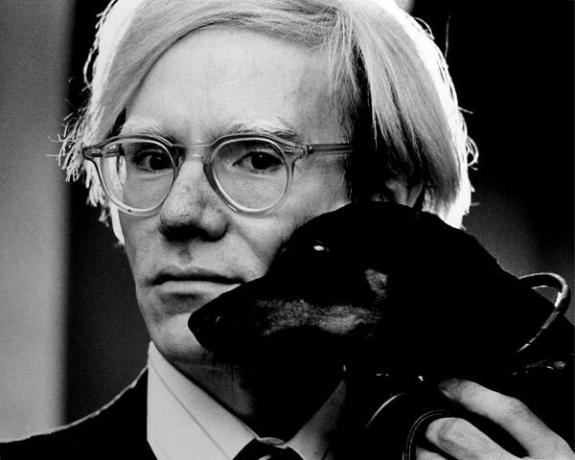
Andy Warhol (1928-1987) was born in the United States into a family of Slovak origin. He is known for his work as a plastic artist and filmmaker, especially for being part of the pop art movement o pop art, along with artists such as Robert Rauschenberg, Jasper Johns and Roy Lichtenstein, among others. In addition, Warhol was the promoter of different art figures of the 70s and 80s such as Jean Basquiat.
Since he was a child, he suffered from a disease popularly known as the San Vito dance, which forced him to spend long periods of rest, time that he took advantage of in developing his creativity.
The early death of his father meant a childhood of poverty, so Warhol set out to become a rich man as he matured, just as he did.
Warhol was a controversial artist, due to different aspects, among which we can count:
- The incorporation of the symbols of mass culture to the fine arts circuit.
- The use of serial reproduction techniques questioning the concept of the original in art.
- Demystification of the idea that only an arduous and long process of creation gives value to the work of art.
- An understanding of the world of art devoid of his mystical aura to recognize in it the market character of it, denied by traditional discourses.
All these aspects promoted by Warhol right in the context of the Cold War meant an important transformation in the orientation of the artistic interests of his time.
Warhol brought out the omnipresence of mass culture and the culture industry, and made the most of it to catapult himself socially and economically.
Thus, while his work was a great ironic discourse on social inconsistencies, he himself deliberately became a pop icon.



